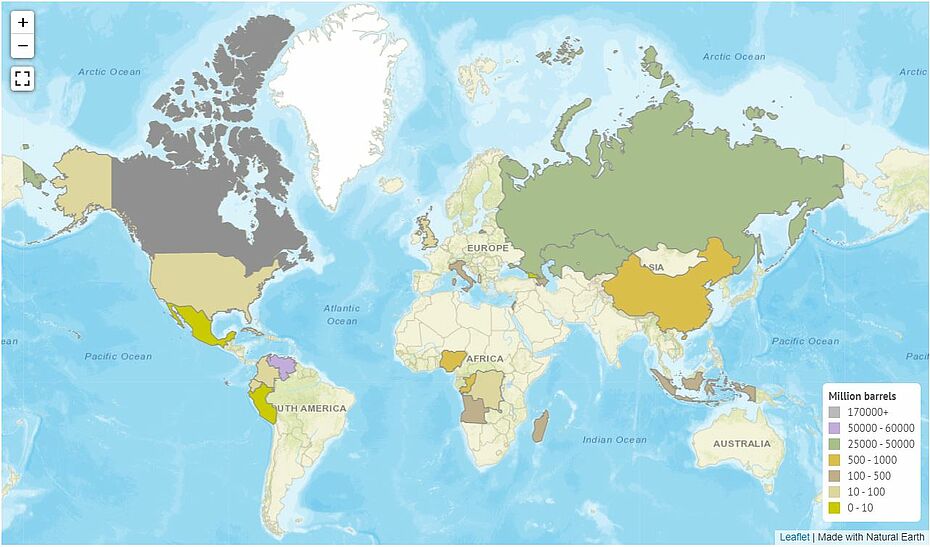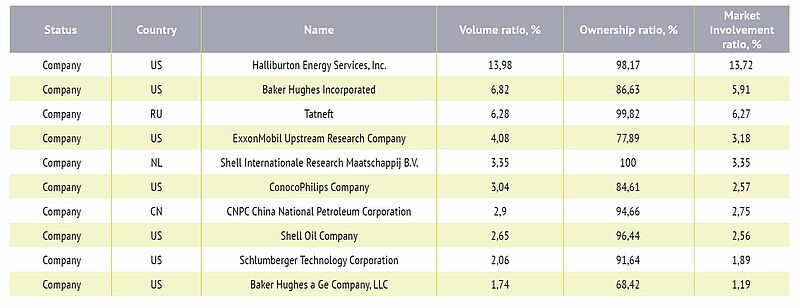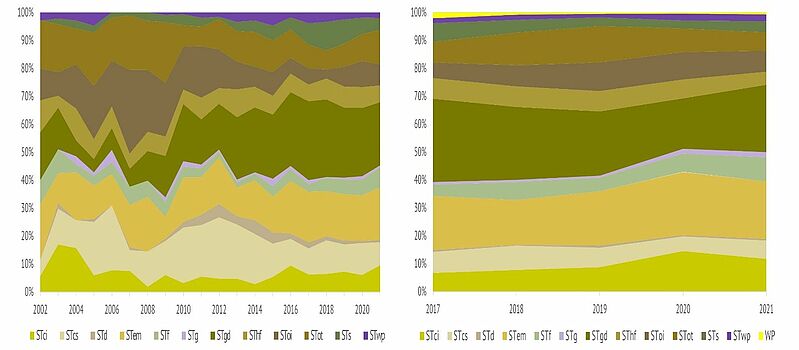Steam injection is one of the most common and widely-applied methods of thermal stimulation of high-viscosity and high-density oil reservoirs causing a significant reduction in the viscosity of the heavy oils. There are three major types of steam injection techniques – SAGD (Steam Assisted gravity drainage), CSS (Cyclic Steam Stimulation) and Steam flooding. In practice, the steam injection process is often supported by a combination of these technologies and the new techniques that are constantly being developed to improve them.
On an industrial scale, these methods are prevalent in the extraction of bituminous oil (oil sands), extra heavy oil or kerogen oil (oil shale), having API gravity of less than 10o and viscosity often greater than 10 000 centipoise. The appearance of these grades of oil is substantially different from traditional oil, sometimes acquiring exotic forms. For instance, oil sands form a naturally occurring mixture of sand, water, clay, minerals and bitumen. Bitumen is a black and highly viscous liquid or semi-solid form of petroleum. Oil sand deposits can be found all over the world. Some of the most important oil sand deposits are located in Canada, Venezuela, the United States, and Russia. At the same time, the established reserves of natural bitumen in Canada alone exceed 160 billion barrels, which already is a huge energy resource. Presently, steam stimulation methods are also actively used in the production of lighter oil having API gravity of less than 25o.
Source: R.F. Meyer, U.S. Geological Survey (2010 Survey of Energy Resources World Energy Council)
Although steam-driven recovery methods are the most widely used and well proven EOR methods, there are a number of associated economic, technological, and ecological challenges. These include high greenhouse gas emissions, difficulties in operation and equipment maintenance, steam condensation, additional operational costs due to loss of energy and severe steam channeling. Therefore, the latest technological innovations in the field are aimed at optimization of the quality of the steam injection process and its generation equipment, while reducing the environmental impact. Equally important is the reduction of energy and water consumption, development of new equipment and materials, improvement of repair operations, and waste utilization. Also, hybrid methods of production, which combine methods of thermal stimulation and hydraulic fracturing, chemical stimulation, electromagnetic or acoustic stimulation, have been developed significantly.
A substantial part of effective technical solutions aimed at the development of these technologies is concentrated in patent documents registered with various patent offices. EnerTechUp company performed a systematic search of patent documents on this subject, prepared a unique patent database, and conducted a thorough statistical analysis of the patenting activity results.
The database includes more than 13 thousand patent documents published in generally-accessible sources all over the world during 1987 and 2022. Statistical analysis for the 20-year period between 2002-2021 includes 4458 patents and 8562 patent applications. General methodology of patent database compilation and statistical evaluation used in this product can be found at www.aenert.com.
Over the 20-year period, patenting activity in the field of oil recovery by steam stimulation has grown substantially and continues to remain on a high level. Since 2013, over two hundred patents are granted and several hundred patent applications are filed annually.
The most active registration of patent applications took place in 2015-2019. The most popular patent offices with applicants were USPTO (the United States), CNIPA (China), and CIPO (Canada). Representatives of 50 countries around the world participated in the patenting process.
Breakdown of inventions by patent offices. Patents, 2002-2021 (left); Applications, 2017-2021 (right)
The largest number of patents were granted to the residents of the United States, China, Canada and Russia. The largest number of patent applications in the last five years were filed by the residents of China, the United States, and Canada. The largest number of patents were issued to non-residents by CIPO (CA), USPTO (US), IP Australia, and CNIPA (China).
In total, 2867 individual IPC subgroups that were assigned 39050 times and were identified in the patent database under consideration. Among IPC subgroups the most popular were E21B 43/24 (Obtaining fluids from wells using heat, e.g. steam injection), E21B 43/12 (Methods or apparatus for controlling the flow of the obtained fluid to or in wells), and E21B 43/16 (Enhanced recovery methods for obtaining hydrocarbons).
In patents and patent applications, the technological categories Heavy and extra heavy oil and Unspecified or general technologies were most often mentioned. In the majority of cases the authors indicated Low efficiency of primary production and High running costs of repair and replacement as the problems the technical solutions disclosed in the patents and patent applications were aiming to solve. In the vast majority of cases, the inventions were related to devices or methods.
Top 10 applicants account for 46.5% of patents and 55.5% of applications. The leaders by the number of patents granted in the 20-year period were American companies Halliburton Energy Services, Inc. and Baker Hughes Incorporated – 617 and 301 patents, respectively. Also, Baker Hughes Incorporated registered the largest number of new patent applications during 2017-2021 – 647 documents, substantially surpassing the following participant from the list. However, taking into account a large number of participants of the patenting process, the shares of the leaders in the intellectual property registry remained moderate – about 14% for Halliburton Energy Services, Inc., and about 6% for Baker Hughes Incorporated. In the past five years the share of Baker Hughes Incorporated in the intellectual property registry for patent applications has grown considerably, to more than 19%.
Top 10 applicants by intellectual property market involvement. Patents, 2002-2021
Volume ratio - share of applicant documents in total number of documents.
Ownership ratio - applicant's participation share in total number of documents.
Market involvement ratio - volume ratio multiplied by ownership ratio.
A detailed statistical and technological analysis of patent documents related to steam injection was conducted for individual patent groups containing documents with similar technological attributes. The groups were selected on a trade-off basis, taking into consideration the technological importance of a subject, its popularity with inventors, the possibility of unambiguous interpretation of technological attributes of a group, and reasonable number of the groups. List of individual patent groups includes:
Surface-generated steam – technologies and equipment for generating steam on the surface of the ground;
Downhole steam generation - technologies and equipment for generating steam inside the wellbore;
Steam generation and steam engines – predominantly various kinds of steam generators;
Equipment and materials for drilling and steam injection;
Cyclic steam injection – cyclic steam stimulation with interim oil production;
SAGD – Steam Assisted Gravity Drainage;
Steam flood – uninterrupted steam injection or displacement of oil by steam;
Directional drilling and hydraulic fracturing – associated technologies related to directional drilling and hydraulic fracturing are proposed along with steam injection for complex enhancement of oil recovery;
Steam injection & chemical stimulation – simultaneous or alternate stimulation of a reservoir by steam and chemical agents;
Other steam treatment approaches – other technologies of steam stimulation;
Waste processing in steam stimulation – waste processing and removal during or after steam stimulation;
Other inventions in steam stimulation – this group includes patent documents disclosing other technological operations related to steam stimulation.
From the list of twelve elaborated technology elements, SAGD, Equipment and materials for drilling & steam injection, and Steam injection & chemical stimulation were mentioned more than others in patent documents. Technical solutions related to Downhole steam generation and Steam generation and steam engines were mentioned less often than others.
Major manufacturing operations and equipment. Breakdown of documents by mentioned technology elements. Patents, 2002-2021 (left); Applications, 2017-2021 (right)

STI-Steam injection, STci-Cyclic steam injection, STcs-Steam injection & chemical stimulation, STd-Downhole steam generation, STem-Equipment and materials for drilling and steam injection, STf-Steam flood, STg-Steam generation and steam engines, STgd-SAGD, SThf-Directional drilling and hydraulic fracturing, SToi-Other inventions in steam stimulation, STot-Other steam treatment approaches, STs-Surface-generated steam, STwp-Waste processing in steam stimulation
In the years to come a growth should be expected in the number of granted patents related to Steam flood. This technology element demonstrates a sufficiently high A/P coefficient value (Relationship of number of applications to total number of documents by year), and about 50% of patent applications published over the last few years pertain to the start ones i.e., not related to any existing patent family.
Less noticeable growth opportunities are seen in patents related to Equipment and materials for drilling and steam injection, Cyclic steam injection, and Other steam treatment approaches.
Also, an upward trend in the number of patents that will be granted in the future is unlikely for SAGD, Steam injection & chemical stimulation, Waste processing in steam stimulation.
A complete version of the database and patent review can be found at www.aenert.com
